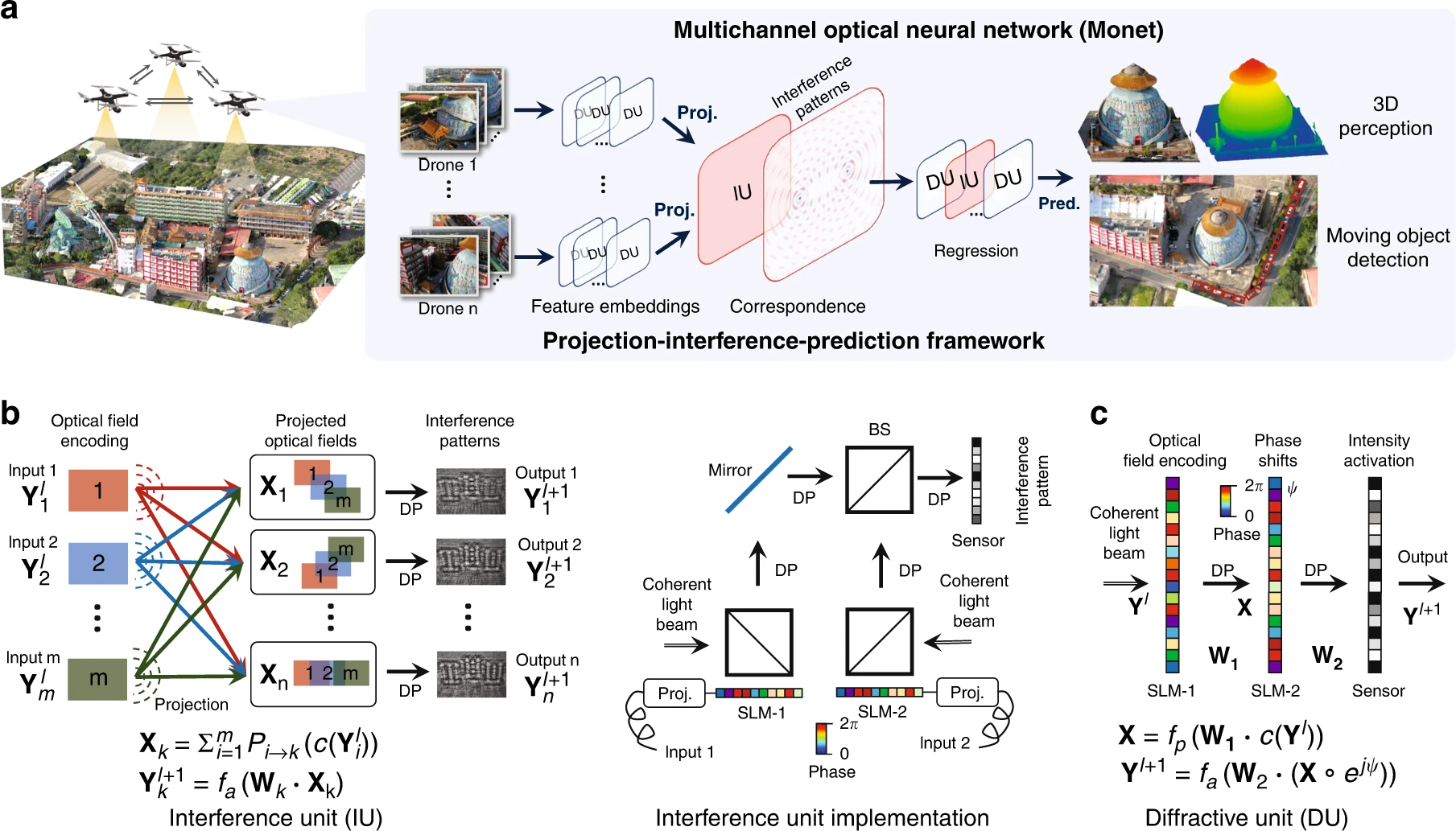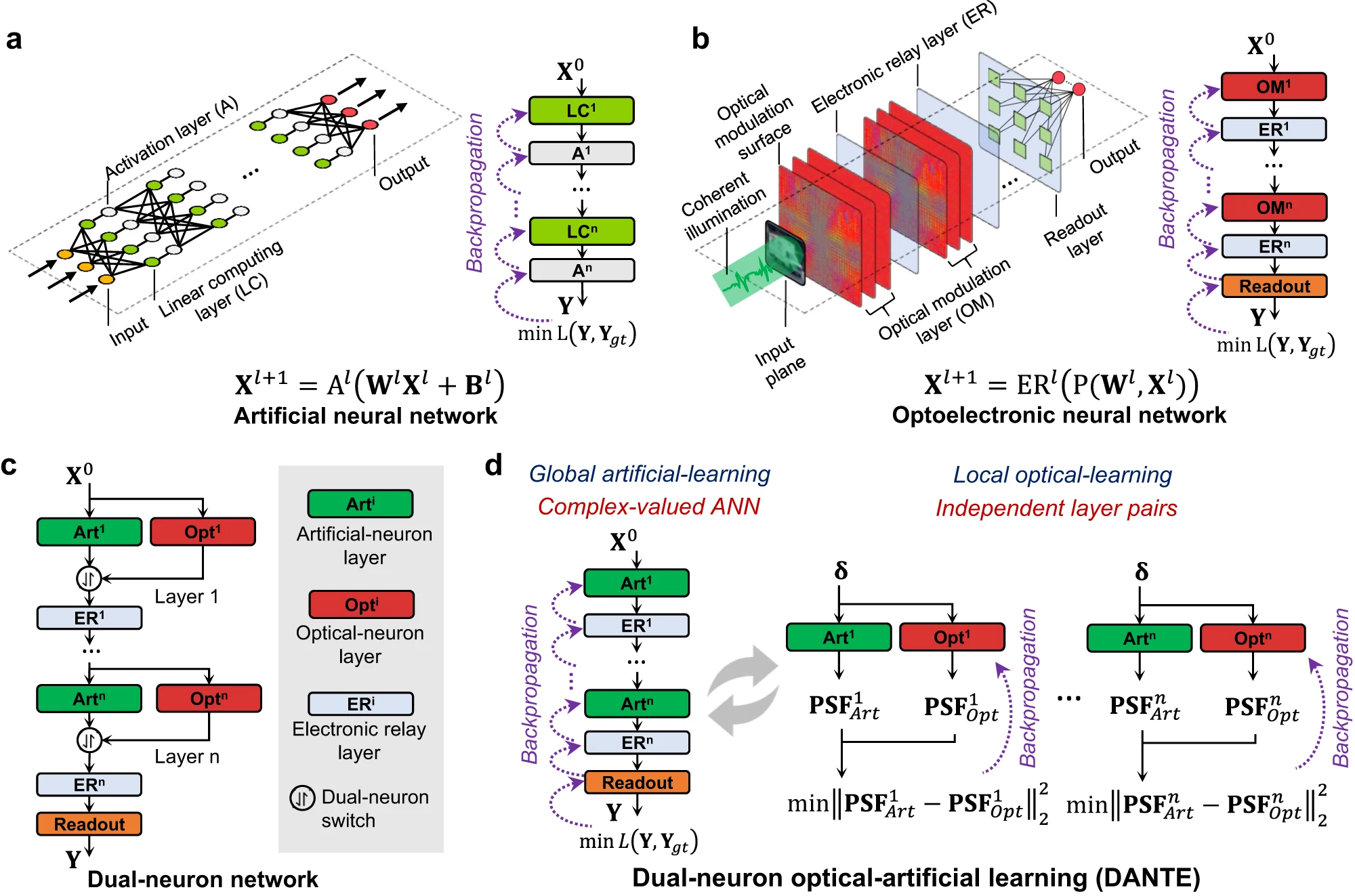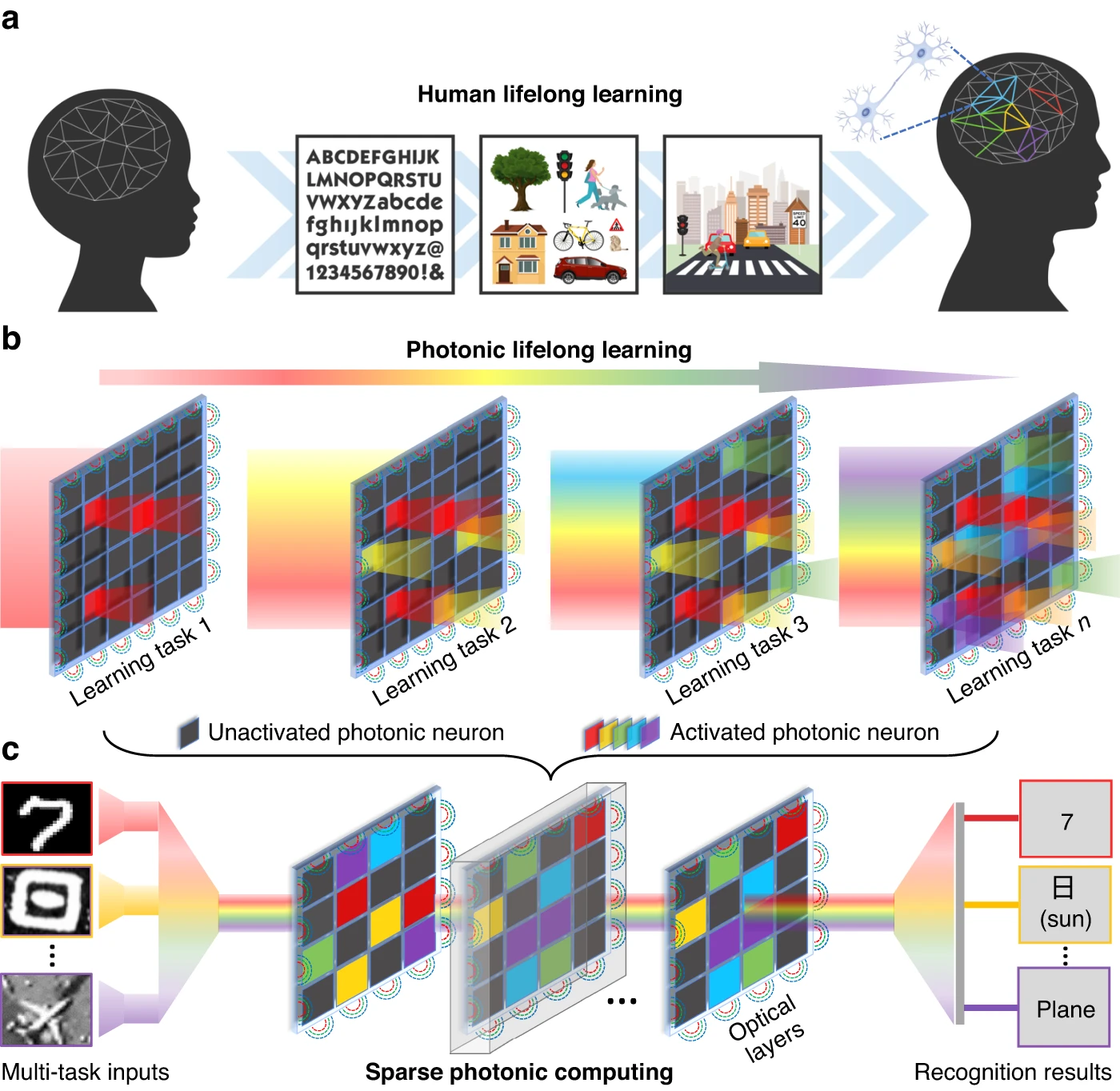Optical Computing
Existing optical computing architectures are mainly single-channel due to the lack of advanced optical connection and interaction operators, solving simple tasks such as hand-written digit classification, saliency detection, etc. The limited computing capacity and scalability of single-channel ONNs restrict the optical implementation of advanced machine vision. Herein, we develop Monet: a multichannel optical neural network architecture for a universal multiple-input multiple-channel optical computing based on a novel projection-interference-prediction framework where the inter- and intra- channel connections are mapped to optical interference and diffraction. In our Monet, optical interference patterns are generated by projecting and interfering the multichannel inputs in a shared domain. These patterns encoding the correspondences together with feature embeddings are iteratively produced through the projection-interference process to predict the final output optically. For the first time, Monet validates that multichannel processing properties can be optically implemented with high-efficiency, enabling real-world intelligent multichannel-processing tasks solved via optical computing, including 3D/motion detections.

Besides, training large-scale diffractive networks faces challenges due to the computational and memory costs of optical diffraction modeling. Here, we present DANTE, a dual-neuron optical-artificial learning architecture. Optical neurons model the optical diffraction, while artificial neurons approximate the intensive optical-diffraction computations with lightweight functions. DANTE also improves convergence by employing iterative global artificial-learning steps and local optical-learning steps. In simulation experiments, DANTE successfully trains large-scale ONNs with 150 million neurons on ImageNet, previously unattainable, and accelerates training speeds significantly on the CIFAR-10 benchmark compared to single-neuron learning. In physical experiments, we develop a two-layer ONN system based on DANTE, which can effectively extract features to improve the classification of natural images.

Additionally, we innovate a reconfigurable lifelong-learning optical neural network (L2ONN), for highly-integrated tens-of-task machine intelligence with elaborated algorithm-hardware co-design. Benefiting from the inherent sparsity and parallelism in massive photonic connections, L2ONN learns each single task by adaptively activating sparse photonic neuron connections in the coherent light field, while incrementally acquiring expertise on various tasks by gradually enlarging the activation. L2ONN avoided the catastrophic forgetting issue of photonic computing, owning versatile skills on challenging tens-of-tasks (vision classification, voice recognition, medical diagnosis, etc.) with a single model.

Publications and links
- Training large-scale optoelectronic neural networks with dual-neuron optical-artificial learning, Nature Communications 2023.
- Photonic neuromorphic architecture for tens-of-task lifelong learning, Light: Science & Applications 2024.
- A multichannel optical computing architecture for advanced machine vision, Light: Science & Applications 2022.
- 大规模光电智能计算
- 智能光计算终身学习架构
- 多通道光电计算赋能光场智能感知
